In parks we trust
 David Foster, Chief Executive of the Parks Trust in Milton Keynes, explains the workings of the Trust and how the model might work for other cash strapped local authorities as the Coalition Government's 'Big Society' kicks in
David Foster, Chief Executive of the Parks Trust in Milton Keynes, explains the workings of the Trust and how the model might work for other cash strapped local authorities as the Coalition Government's 'Big Society' kicks in
The offices of The Parks Trust are situated in the Cambell Park Cricket Pavilion in Milton Keynes, a purpose built, two storey facility that also caters for county, club and corporate cricket (more about this later in this issue).
The Parks Trust, formerly known as Milton Keynes Parks Trust, was established by the Milton Keynes Development Corporation to own and manage, in perpetuity, the strategic open space in Milton Keynes. It took a 999 year lease of 4,500 acres and, at the same time, was given an endowment of around £20m. The endowment was mainly in the form of commercial property in Milton Keynes, and the rental income is used to fund the Trust. Since then, some of that property has been sold and other assets acquired, both in Milton Keynes and elsewhere, to ensure that the Trust does not have all its 'eggs in one basket'.
The Trust was established with a steering group in 1991, which became the Board when the company was incorporated in 1992.

The Trust's green estate comprises around 4,500 acres of parks, meadows, river valleys, woodlands, lakes and the landscaped corridors which run along the main grid roads - about twenty percent of the new city area. As the city has continued to grow, new parks and open spaces are being established and transferred to the Trust with an endowment. The endowment sum that is required is the capital sum needed to invest to generate the annual income to cover the maintenance costs each year in perpetuity.
The Trust is committed to maintaining its green estate to a high standard and to continually improve its quality. Many of the parks were built with the intention that facilities, such as toilets, cafés and play areas, would be introduced at a later date and, over time, the Trust is ambitious to provide such facilities and services.
It was always envisaged by the Development Corporation, that Milton Keynes would continue to grow and that the green estate would n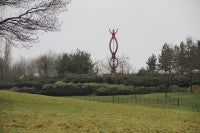 eed to change and, at times, be reconfigured as the city evolved. A key part of the planning, right from the start, was to build in flexibility and make the city 'future proof' as far as it was possible to do so - the wide grid road corridors are an example of that thinking. The Trust considers that it has a responsibility to respond to changing circumstances of different generations, and civic and national priorities, and to help the city develop and grow.
eed to change and, at times, be reconfigured as the city evolved. A key part of the planning, right from the start, was to build in flexibility and make the city 'future proof' as far as it was possible to do so - the wide grid road corridors are an example of that thinking. The Trust considers that it has a responsibility to respond to changing circumstances of different generations, and civic and national priorities, and to help the city develop and grow.
The Trust is a Company Limited by Guarantee and a registered Charity. It is what is often called a 'third sector organisation', a 'not for profit company' and a 'social enterprise'. This means that it has a social purpose that fits within the legal definition of a charity. Under this structure, it can generate income and make profits and operate much the same way as a private business, with one big exception - the Trust's money and its assets can only be used to pursue its social purpose, which is defined in the Trust's Articles of Association.
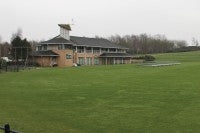 The Articles state that the primary object is to provide, maintain and equip parks, gardens, landscaped areas, woodlands, open spaces, playing fields, playgrounds and recreational amenity spaces within the Borough of Milton Keynes and the environs, for the benefit of the inhabitants and visitors to the area. This land is referred to as the green estate.
The Articles state that the primary object is to provide, maintain and equip parks, gardens, landscaped areas, woodlands, open spaces, playing fields, playgrounds and recreational amenity spaces within the Borough of Milton Keynes and the environs, for the benefit of the inhabitants and visitors to the area. This land is referred to as the green estate.
All the work undertaken by the Trust is for the benefit of the public. Here are some examples of what the Trust does:
- Nearly all of the 4,500 acres of green space the Trust owns in Milton Keynes is available to the public to use freely, every day of the year. The benefits of parks to society, to the economy, to health and well-being and to the local and global environment are well known and widely accepted.
- The environmental education and the events programmes, organised by the Trust, raise awareness of the parks in the local area and help people better understand and appreciate the green environment within the new city.
- Volunteers' programme (around 150 volunteer groups) enables local people to become actively engaged in our work - helping us provide better facilities and undertake work we would not otherwise be able to do, and helping them by giving them meaningful and rewarding activities.
- The promotion of the Parks and of the Trust encourages the residents of Milton Keynes to use and to value their parks and to interact with the Trust, so that we may understand their needs and respond to their suggestions.
- The management of the Trust's investments is undertaken solely for the purpose of providing the income and the long term financial security, so that the Trust is able to carry out its charitable objects in perpetuity.
Management of the Trust
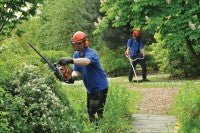 The Board employs a Chief Executive, who leads the management team.
The Board employs a Chief Executive, who leads the management team.
The Trust has around forty-three employees. They have a small Direct Works Team of seven staff, but most of the physical landscape management work is undertaken by independent contractors who tender for the work.
The staff team comprises four sections:
Community - liaison with the community, organising events and activities to 'animate' the parks, management of recreation and leisure uses including licences, environmental education, volunteer management
Operations - the physical management of the green estate; inspections and safety checks of the parks, play areas and equipment and facilities; dealing with adverse possession
Communications - promoting and positioning the parks and the Trust; dealing with adverse publicity
Finance and administration - day to day management of finances, administration, preparation of annual accounts and management accounts; management of the
Trust's investments.
The Land owned by the Trust
The Trust has three different types of land under its control:
1. parkland, floodplain, ancient woodland, scheduled monuments
2. transport corridors which are also sometimes known as parkways
3. income-earning assets
Most of the land in the first category is held on a 999 year lease from Milton Keynes Council, which owns the freehold. The lease requires the Trust to maintain the land in accordance with good sivicultural, horticultural and arboricultural and landscaping practice. The lease limits what the Trust can do with the land - for example, it cannot build on the land without the consent of the freeholder. Much of the land is within the floodplains of the river catchments - the Great Ouse, the Ouzel, and the 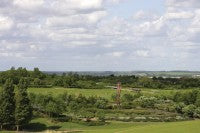 Loughton Brook. Some of it is Scheduled Ancient Monument (twelve sites), some designated as local wildlife sites (5) and one of the Trust's three ancient woodlands is a site of special scientific interest.
Loughton Brook. Some of it is Scheduled Ancient Monument (twelve sites), some designated as local wildlife sites (5) and one of the Trust's three ancient woodlands is a site of special scientific interest.
The second category is owned by the Milton Keynes Council as Highway Authority, and was previously owned by Buckinghamshire County Council. The council has precedence in the transport corridors for any use for transport purposes, and is fully responsible for the upkeep of the road and redways within the corridor and the verges, roundabouts and central reservations immediately associated with the highway. Subject to these considerations, the land within the corridors is leased to the Trust on a 999-year lease, and the requirements of the Trust come immediately behind those of the highway authority.
The third category includes all the Trust's commercial properties, some of which were included in the original endowment from the Development Corporation. Within Milton Keynes the Trust owns neighbourhood shopping centres at Willen, Neath Hill and Shenley Church End; two multi let office buildings, eleven public houses and two industrial estates. Elsewhere in the UK, the Trust owns a number of retail warehouses, convenience stores and offices. The Trust owns the freehold of this property and is able to buy and sell in line with its investment strategy.
The Trust's Finances
The Trust is self financing and generates the income needed to maintain the green estate from its investments and from its operations including farming, letting of 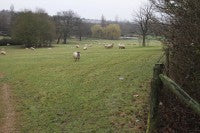 paddocks, events, sale of timber and commercial leisure activities.
paddocks, events, sale of timber and commercial leisure activities.
The majority of the landscape management costs are incurred on three year maintenance contracts. Currently, there are eighteen such term contracts covering different areas of the city, ranging in size from £50K to over £1m. Each term contract covers routine maintenance operations such as grass cutting, weed control, shrub pruning, tree maintenance, litter collection and hedge cutting. Non-routine work is either let as specific one off contracts (typically for thinning a plantation or resurfacing leisure routes), or is undertaken by contractors working to a schedule of rates tendered at the start of the year. In this way, flexibility is maintained and costs kept very tightly under control.
The work of contractors is complemented by volunteers (around 150) who are supported by a full time Volunteer Co-ordinator. Whilst the volunteers are not very involved in maintenance operations, they are an important part of the process, particularly in terms of reporting damage and defects and carrying out more intricate and specialist work such as habitat creation and hedge laying. Volunteers also help out in the office, work with Education and Events Rangers and some who take photographs for use in communications work.
The Trust has a responsibility to ensure it is financially sustainable in the long term and, therefore, it has a financial strategy with two main aims:
- generating regular and sustainable annual income in sufficient quantities to fund all the work it wants to do to maintain and enhance the green estate
- building its asset base to a size that it can, in time, invest it in low risk investments to reduce its exposure to any future economic downturns
The Trust has developed a long term financial model that helps to work out expenditure requirements well into the future, the size of the asset base needed to fund the Trust and what level of total return is needed from those assets in order to be financially viable in the long term. They currently have a net asset value of £70m and plan to grow this to £120m (at today's prices) by 2025 in order to put the Trust on a sound financial footing.
The applicability of the Milton Keynes Parks Trust model to other locations
The Trust get many enquiries about their model and whether it could provide a template for the long term management of public open space elsewhere. They are acutely aware that it is still early days and the real test will be whether, in one hundred years' time, the Trust is still financially sound and still maintaining its green estate to the same high standards it is today.
Their model has a great deal to commend it including that it has:
- managed and continues to manage its green estate to a high standard. Essentially, it has one job to do and can focus on that job, and should be able to get better  and more efficient at doing it every year.
and more efficient at doing it every year.
- continued to be independent and self financing and can, therefore, plan ahead without fear of cuts in public sector funding or changes in political priorities.
- managed its asset base well and, as a result, has grown at a faster rate than the increase in costs of managing the land.
- created and adequately funded sinking funds for major capital replacements.
- become well respected in the parks, forestry and landscape professions and is greatly valued by the people of Milton Keynes.
- recruited and retained a high calibre board of Trustees and staff.
A number of factors have been important in contributing to its early success and these need to be born in mind when considering applying the model elsewhere:
- The Trust appointed some very high calibre staff and attracted some very astute Trustees. It could have been very different if certain key individuals had not been involved in the Trust right from the start.
- Property in Milton Keynes has been a very good investment and, although there have been periods where the Trust's property has not performed well, the Trust's property portfolio has generated sufficient funds to pay for the maintenance of the green estate, to provide for the sinking funds and to increase the asset base.
- The high performance of the property portfolio has also enabled the Trust to cope with a number of unforeseen cost implications. For example, the Trust has only been able to recover a small percentage of the VAT it pays out; the cost of landfill has significantly affected annual litter collection costs; the increase in cost of insurance, particularly public liability and employers liability; various storms and floods.
- The Trust has been very focused on building a robust and sustainable organisation and has not allowed anything to distract it from its cause. In the early days, the Trust acquired the strategic open space in Milton Keynes which presents its own management challenges that are different (not bigger or smaller) to those presented by small scale parcels of land pepper-potted around a town or city. It has relatively little formal, high maintenance parkland and neither does it have a backlog of repairs and maintenance that burden many parks authorities.
Two other key points of note are:
- The Trust has continued to take new parks and open spaces, and the developers have been willing and able to fund the endowment sums required by the Trust.
- The local authority in Milton Keynes has resolved that it would like the Trust to take on the management of its green space, and they are currently exploring how this can be brought about without jeopardising the viability of the Trust.
Whether the MKPT model would succeed elsewhere is difficult to say, a more in depth assessment would be needed. However, when one looks across the country at the sorry state of much of the public open space and the immense challenges and problems facing local authorities in particular, it is probably well worth considering.
